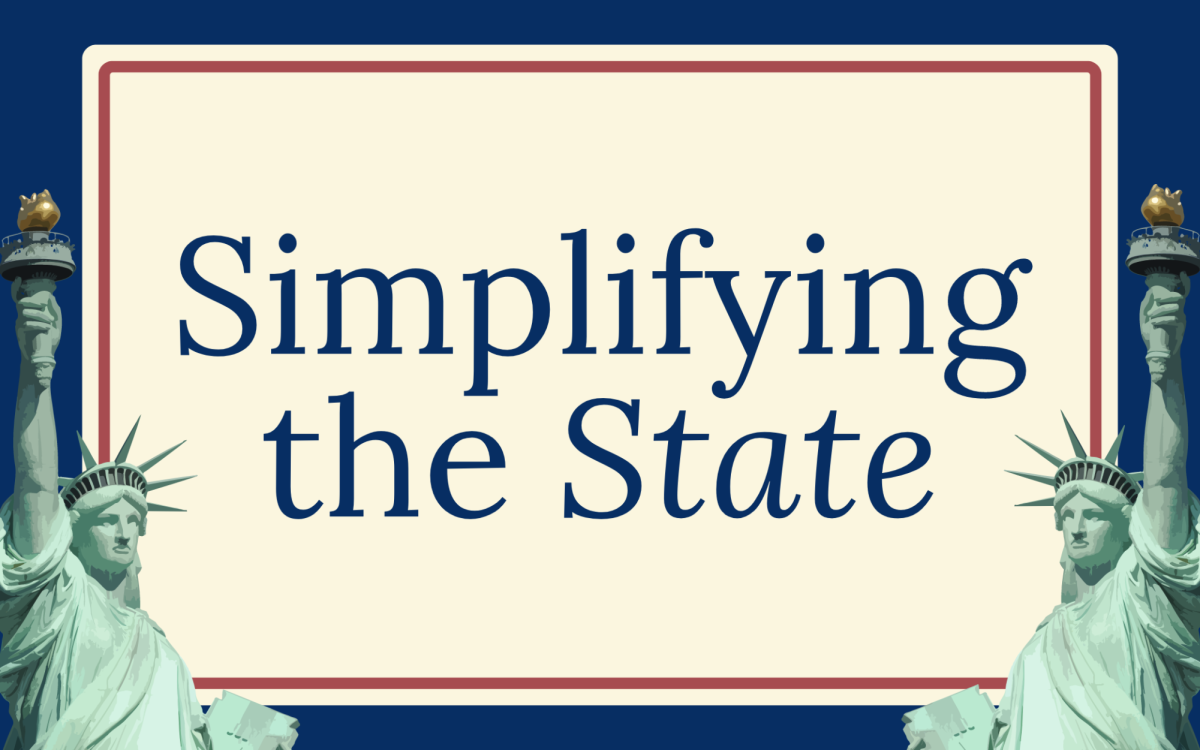Adam Watson (Poorly impersonated by Nicholas)
Welcome back to “Simplifying the State,” the podcast where we break down politics so you don’t have to take painkillers to stay well informed on world events. As always, I’m Adam Watson.
Nicholas Perrin (00:10)
And I’m Nicholas Perrin.
Adam, you sound a bit funny today. What’s up with that?
Adam Watson (Poorly impersonated by Nicholas)
I just have a cold. It’s nothing.
Anyway, if you would be so kind as to rate us five stars and share with a friend, that would be greatly appreciated. I’m working with a cold to give you quality content—it’s the least you can do for us. Wink wink, nudge nudge.
Nicholas Perrin (00:29)
Just kidding, y’all. Adam is in Alaska right now, and like—it’s okay that he’s on vacation. I’m not jealous or anything.
Anyway, today, I’ll be going over changing U.S. foreign policy—specifically with NATO. What am I talking about, “we”? I will be going over changing U.S. foreign policy.
So NATO is a military alliance developed in the early Cold War to prevent Soviet aggression in Europe. Nowadays, it kind of does the same thing, but it’s no longer the Soviet Union—it’s Russia. But, you know.
It was also used to invade Iraq after 9/11 and Afghanistan. The reason we’re talking about it today is because recently there was a NATO summit in The Hague to talk about increased defense spending. You might’ve heard by now that Trump has been pushing for defense spending to increase from 2% to 5%, which is pretty absurd—considering the closest country to 5% right now is Poland, with about 4.1%.
At that summit, pretty much all countries agreed to hit that 5% goal—except for one.
We’ll get into that in a second. But to give you some perspective on how big of a jump 5% of GDP is from 2%, or even just from 3.5%—which is what the U.S. currently spends: The U.S. currently spends $962 billion on its military annually for 2025. To get to 5%, the U.S. would have to spend $424 billion more, bringing the total to $1.386 trillion.
So yeah. The country that initially refused to meet this goal and asked for an exemption was Spain.
Now, Spain isn’t even the worst-off financially among NATO countries. There are plenty in worse shape. In fact, Spain is one of the fastest-growing economies in Europe right now.
Spain refused the 5% spending target over concerns about what it would mean for the country’s welfare system, economic growth, and green energy transition. Also, they argued the 5% target was unreasonable considering Russia’s limited progress in Ukraine over the past two years.
Spain wasn’t the only country with concerns. Slovenia—specifically, the smaller parties that formed a coalition with the current ruling party—also pushed back. They said the 5% goal was not what they agreed to when they entered the coalition. Instead, they had agreed on a 3% target by 2030. That disagreement sparked some government infighting and even raised the possibility of the coalition collapsing, which is never good for a ruling government in the short term.
Now, because of this, Slovenia’s prime minister has proposed a referendum asking the Slovenian people whether they want to stay in NATO. That move was … unexpected, to say the least. And it’s a huge gamble.
Other Slovenian politicians have criticized him for taking such a bold step. The referendum itself is risky because it opens the door for potential Russian interference—especially since only about half of Slovenians currently support staying in NATO.
Most experts think Slovenia won’t actually leave NATO, even if the referendum result is negative, since the vote isn’t legally binding. But still, something similar happened with the U.K. and Brexit. That wasn’t legally binding either—until it was.
So this is pretty dangerous overall. If it did somehow lead to Slovenia leaving NATO, it could spell bad news for the rest of the alliance—especially when it comes to reaching the 5% goal or even remaining unified at all. While NATO’s collapse is very unlikely, anything’s possible.
Anyway, back to containing Russia. Recently, Trump has started to sour on Putin and take more of a liking to Ukraine. That’s largely due to recent drone strikes on Ukraine that caused thousands of casualties—one of the largest missile and drone attacks since the war began.
Trump expressed his distaste for the attacks, saying he was “not happy” with Putin’s continued aggression. He explained, quote: “He’s killing a lot of people—soldiers. And they’re soldiers mostly. And now it’s up to 7,000 a week.”
Alongside that, Trump has opposed a proposed halt in U.S. equipment to Ukraine. The initial reasoning behind that halt was concerns over American stockpiles.
That’s a little unexpected, considering that just a few months ago Trump was complaining the U.S. was getting ripped off—arguing that Ukraine was getting all this equipment for free at America’s expense.
To address that concern, the U.S. helped negotiate a deal allowing American companies to mine rare earth metals in Ukraine. That appeased Trump for a bit, but he was still unhappy with giving away weapons without compensation.
So now, he’s proposing a new method: The U.S. would sell weapons to NATO countries like Germany, Norway, and Poland, which would then give those weapons to Ukraine.
That would accomplish a few things:
- It gets weapons to Ukraine.
- It gives the U.S. a financial incentive.
- It helps NATO countries meet the 5% defense spending goal Trump wants.
- It improves NATO – U.S. relations.
And politically, it gives Trump plausible deniability. He’s not “directly” sending weapons to Ukraine—he’s just selling weapons to allies. Then they send them to Ukraine.
That strategy would likely help him maintain support from his more isolationist, Russia-friendly cabinet members and political base.
And yeah — that’s pretty much it. Thank you for listening to “Simplifying the State.” We’ll be back next week with another episode. Adam will likely be in that one. If not, well—you’re stuck with me again.
Thanks for listening. See you next time.








